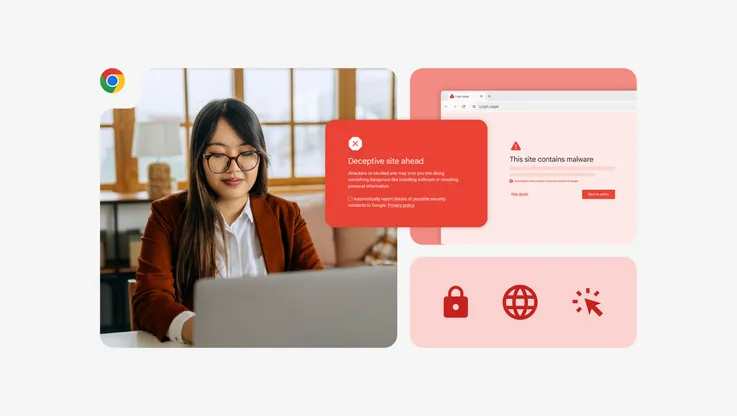Don’t get locked out: set up recovery options for your Google Account
Strong passwords help protect your accounts and information on the web. But forgetting your password is like losing your keys—you can end up locked out of your own home. It gets worse if your password gets compromised or stolen. Sometimes the thief will change your password so you can't get back into your own account—kind of like someone stealing your keys and then changing the lock.
If you've lost your Google password, you need a way to get back into your Google Account—and back to all of your stuff in Gmail, Maps, Google+ and YouTube. To help you, Google needs to be able to tell that you’re the rightful account owner even if you don't have the right password. There are a few easy steps you can take right now to make it easy for you—and no one else—to get into your Google Account if you forget or don’t know the password.
1. Add a recovery email address. By registering an alternate email address with your Google Account settings, you’re giving Google another way to reach you. If you forget your password, Google can send a link to that recovery email address so you can reset your password. Google can also use that email address to let you know if we detect something suspicious happening with your account.

2. Add a phone number to your Google Account. Your mobile phone is the best way to regain access to your account if you forget your password. It's like the "fast lane" for account recovery: we text a code to the phone number you've registered with us, and you'reback in business in no time. Your phone is more secure and reliable than other means of recovering your account. Methods like “secret” questions (asking your mother’s maiden name or city where you were born) may have answers that are easy to remember, but they are also possible for bad guys to uncover. And we’ve consistently seen that people who register a recovery phone are faster and more successful at getting their accounts back than those recovering their accounts via email.
You can also get a text message if Google detects that something suspicious is going on with your account. Giving a recovery phone number to Google won’t result in you being signed up for marketing lists or getting more calls from telemarketers.
3. Keep your recovery options up to date. It’s a good idea to check your recovery options every so often. For example, if you change your phone number after setting up your recovery options, take just a minute to update your recovery settings to match. We'll remind you of your current settings every so often to make it easier for you to keep them up to date.
That’s it! You can either update your recovery options next time you’re prompted, or you can take two minutes to do it right now on our Account recovery options page. For more advice on how to protect yourself and your family online, visit our Good to Know site, or check out some of the other posts in our series on staying safe and secure.




